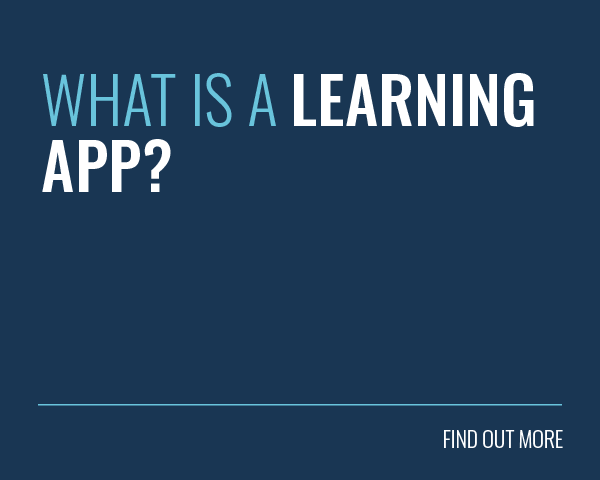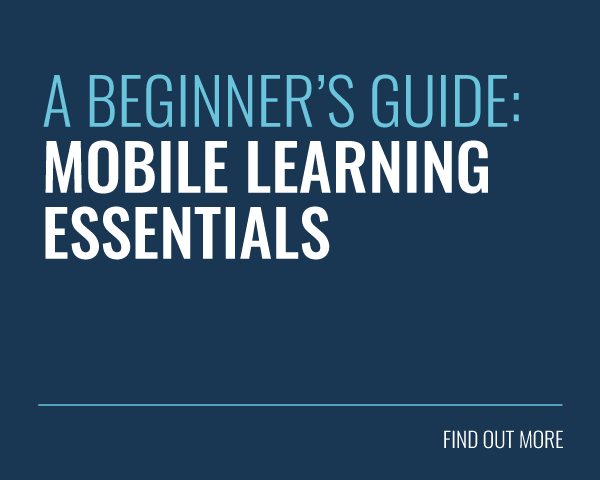
If you’ve decided to add a mobile dimension to your training programme, you’ll have a lot of work in front of you. Not to worry – we’ve put together a list of handy mobile learning tips to help you out!
1. Know your audience
As with any learning initiative, the first step is knowing who will be using the learning content. Think about your learners and how they currently engage with their training. If there’s anything missing that could improve their experience, now’s a good time to work on it.
2. Ask your Audience
 Even if you think you’ve got a good idea about your learners, there’s no substitute for asking them directly. If your LMS has a survey functionality, you can create a questionnaire to help you discover the key facts, like the devices they use, when they use them and how they feel about their current training. You might find something out that you’d never even thought of!
Even if you think you’ve got a good idea about your learners, there’s no substitute for asking them directly. If your LMS has a survey functionality, you can create a questionnaire to help you discover the key facts, like the devices they use, when they use them and how they feel about their current training. You might find something out that you’d never even thought of!
3. Are your learners ready?
There’s every chance that your learners are simply not ready for a mobile-based training experience. If that’s the case, you have two choices: you can figure out how to get them ready, or you can conclude that mobile learning might not be the ideal solution for you at the moment.
4. Don’t switch to a mobile-only solution
There are many benefits to mobile learning, but it won’t necessarily address all of the training needs for everyone. Think of mobile as another facet to a larger training programme, but don’t abandon all of your learners who aren’t prepared to learn on their mobile devices.
 5. Know your objectives
5. Know your objectives
Be clear about what you want to achieve with your overall training programme before you start. It’s only when you know your objectives that you can envision where mobile learning might fit.
6. Write a vision statement
Once you’re clear about your audience and your objectives, write down what you’re looking to achieve. Come up with a short sentence which sums up the point of your mobile learning initiative. As the project moves forward, keep referring to it to make sure you’re still on track.
7. Do your research
When you’re setting out on a new mobile learning adventure, make sure you know what’s possible. There’s every chance that the perfect solution to your learning objectives lies in augmented reality, or in a competitive quizzing solution. Mobile technology is developing faster and faster every year – make sure you stay ahead of the curve.
8. Be a visionary
While you’re doing your research, investigate all of the emerging tech and don’t be afraid to try something new. Don’t wait for some other company to innovate – blaze a trail!
9. What’s the scope?
At some point, you’ll need to think about the practicalities. Will your mobile learning consist of a single piece of mobile content? Or perhaps you’re looking to upgrade to a responsive LMS and make your entire training programme more mobile-friendly. Whatever your project involves, it’ll be easier to bring it to life once you’ve nailed down the specifics.
10. Look at your current content
There’s no point trying to reinvent the wheel if you don’t have to. It’s helpful to do an audit of your existing content to figure out what’s working well already, and which parts need a little work. It’s quite possible that some of your existing content simply needs to be tweaked a little to optimise it for mobile devices.
 11. Cost it up
11. Cost it up
When you know what you want to do, the next step is to figure out how much it’s going to cost. This will be an important figure later when you need to calculate how much of a return you’ve made on the investment. Don’t simply think of the cost of implementation – try to consider the long term costs. For example, the cost of an authoring tool might seem high, but it means not having to pay somebody else to create your content further down the line.
12. Get buy-in from the top
Learner engagement will decide whether your mobile initiative is a success or not. If you can’t engage the learners, all of your efforts will be in vain. One of the easiest ways to gain their confidence is to lead by example. Make sure that you have the backing of everyone from the CEO down to the regional managers. Once you have their support, your learners are more likely to take the initiative seriously.
13. Consult/hire a mobile UX/UI expert
If you decide to delve into producing a mobile learning solution, there are plenty of pitfalls you might find along the way. Find someone who has experience designing mobile apps and you can avoid these mistakes before you make them.
14. Consider the learning environment
Desktop eLearning is easier to plan for – learners will most likely be sitting at a desk! With mobile, your learners could be anywhere at all. When designing mobile content, just picture yourself using it on a train full of commuters. Try not to include essential information in the audio, use a large, legible font and make sure it can be absorbed quickly at a glance.
15. Break content into chunks
If you’ve audited the content you already have, you’ll want to plug any gaps you’ve identified with more mobile-friendly content. Because your learners might well access it on the go, short content works better on mobile devices.
 16. Make it fun!
16. Make it fun!
Don’t just make boring content smaller – make it enjoyable for your learners by adding gamification elements. Things like badges, points and leaderboards add another dimension to the learning. By adding that extra element of competition, your learners are more likely to engage with the content.
17. Maximise the social element
If you want your initiative to ultimately pay for itself, you need to also boost the social aspect. Social functionality lets learners share their knowledge and get advice when they need it. It’s also something that works particularly well on mobile devices – after all, back in the old days, they used to be phones!
18. Test, test, test
Once your mobile solution starts coming together, you can never test it enough. Make sure it functions on all devices and behaves the way you want it to. Catching any bugs at this stage will save you a lot of time later.
19. Put a support network in place
Before you’ve launched your initiative, make sure you’ve identified experts or champions who can help drive it forward. They’ll know the system inside out and if any problems arise, they’ll be able to give a quick response.
20. Build excitement
A strong launch will give the project the momentum it needs to become a real success. Make sure you publicise the initiative extensively pre-launch. Give your learners enough information to get them excited, but hold back just enough to keep them curious.
21. Listen to Feedback
No matter how much you test, there will always be an issue you’ve overlooked. Sometimes, you can be so close to the project that you forget how to see it with fresh eyes. Make sure your learners have a channel to give feedback and make sure you listen to what they say!
22. Assess post-launch
Your new mobile learning initiative doesn’t end when it’s launched – this is where it really begins. As with any learning initiative, keep analysing, keep running reports and keep on top of what works and what doesn’t. It’s only by doing this that you can finally justify the investment that went into it.
This is an extract from our brand new white paper, Mobile Learning and the Future of L&D. Click the button below to download your free copy!









